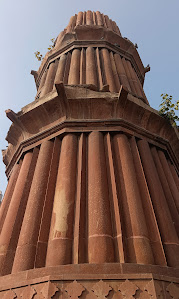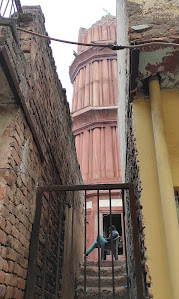

Hastsal Minar is a historic tower located in the Hastsal village of West Delhi, which dates back to the early 17th century during the reign of Mughal Emperor Shah Jahan (1628–1658). The minar, often referred to as the "Mini Qutub Minar" due to its striking resemblance to the iconic Qutub Minar, was part of a larger complex, likely a hunting lodge or palace used by Shah Jahan during his visits to the area. The Hastsal Minar stands at approximately 17 meters (about 55 feet) tall and is made of red sandstone and bricks. It is a three-story structure, octagonal in shape, with intricate carvings and decorative elements that are similar to Mughal-era minarets. The tower is said to have served as a lookout or observation tower, providing an elevated view of the surrounding landscape. Hastsal village, where the minar is located, was known to be a royal retreat during Shah Jahan’s time, and the minar may have been part of a larger hunting complex. The name "Hastsal" itself is derived from the Persian words "Hast" (meaning elephant) and "Sal" (meaning place), as the area was known for hosting royal elephant stables. Unfortunately, much of the surrounding complex has been lost to time, and only the minar survives today. Despite its historical significance, Hastsal Minar has received limited attention and preservation efforts. Urban encroachment and neglect have impacted the monument, though it remains an important reminder of the Mughal architectural legacy in the outskirts of Delhi